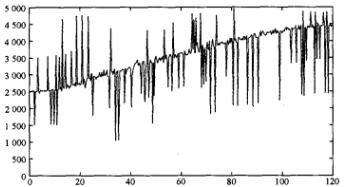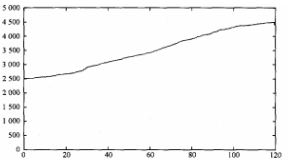Application research of tilt sensor in solar tracking system
0 quote
With the rapid economic development, the demand for energy and the high pollution caused by it have become increasingly prominent [1]. Solar energy as a new type of clean energy, can be widely developed, has become a hot research and development of countries, how to efficiently obtain solar energy resources is an important issue at present. Traditional solar panels are mostly divided into fixed installation types, and the square Angle and height of solar energy change with time, so the conversion efficiency of such fixed installation battery panels is low [2]. Through theoretical analysis, whether the photovoltaic power generation system adopts the automatic solar tracking mode, its energy recovery difference reaches [3]40 ~ 50, and the dual-axis tracking can increase the power generation of L4]35 ~ 40. Therefore, the research on the automatic sunshine line tracking has positive practical significance for the development of photovoltaic power generation system.
In this paper, the inclination detection and control in the solar energy tracking control system are studied, and the detection circuit of the inclination sensor, the data acquisition and filtering processing of the inclination sensor are mainly studied, so as to realize the accurate measurement of the inclination.
1 Solar tracking control system scheme
The solar tracking system studied in this paper consists of two parts: monitoring center and solar tracking control. The monitoring center mainly completes the status monitoring and control of the solar panel, and the solar tracking control is the core part of the system, driven by two motors in the horizontal direction and the tilt direction (that is, the tilt Angle) to complete the automatic tracking function of the panel.
In the actual system control, the real-time orientation and height of the sun can be obtained according to the time information, latitude and longitude information provided by GPSS, and the dual-axis support can be adjusted by the control motor to complete the sun tracking. The system uses a step-by-step visual day tracking, that is, the operation of the two-axis support is not continuous, but given a threshold value. If the difference between the current solar Angle and the solar panel Angle exceeds the set threshold, the two motors are started to complete the Angle adjustment. This not only reduces the energy consumed by the rotation of the bracket, but also improves the solar energy conversion efficiency.
2 Inclination test module design
2.1 Core selection
In this paper, sca60c single-axis tilt sensor is selected, which is an accelerometer. It consists of silicon microsensors and signal processing chips, sealed in the SCS shape. Firstly, the geodetic force component in the measurement direction is measured, and then it is converted into the Angle between the gravity acceleration velocity and the sensor sensitive axis, so as to measure the tilt Angle of the support frame. Transducer single-pole 5v power supply, sensitivity 2v /g, measuring range 1 ~ 1g(response tilt Angle of 90 degrees range). ~ 90), the voltage output range is 0. 5 ~ 4. 5 V. The corresponding formula of inclination Angle and output voltage is as follows:

Where :O bias is the output voltage when the inclination sensor is in a relative horizontal position; Sensitivity refers to the sensitivity of the tilt sensor.
According to the output characteristics of SCA 60C single-axis tilt sensor, this paper selects a new generation of single clock/machine cycle 8051 single chip microcomputer J-SCC 12C 5604A single chip microcomputer from Macrocrystal Technology Company. The code has the characteristics of high speed, low power consumption and strong interference, and is fully compatible with the traditional 8051, but the speed is increased by 8 ~ l2 times. With 4-way pw/M, 8-way high-speed 10-bit A/D conversion, does not require a special programmer and simulator, through the serial port (p3)/P 3.1) can be carried out in a straight line sequence, greatly saving the design cost.
2.2.1 Hardware circuit design
The tilt Angle sensor module is installed on the lower surface of the solar panel to collect the tilt Angle of the support. In working state, the analog voltage output signal number of sca60c is input to the A/D acquisition port of the single chip microcomputer, and the converted digital signal number communicates with the single chip microcomputer in the main control box through the serial port to complete the Angle feedback. The hardware circuit design is shown in Figure 3.

3. Data acquisition and filtering processing of tilt sensor
In this paper, the tilt sensor collects the output voltage every 300m s and turns the panel from o to 90 RPM at constant speed. The resulting data is shown in Figure 5. The Z-axis in the figure represents a 90 degree rotation of the panel. The time used, the axis is the voltage value of the sensor output at the corresponding time. Obviously, the output voltage signal of the sensor shown in FIG. 5 cannot be fed back to the mcU as the Angle signal of the panel, otherwise it may cause the wrong action of the tilting side to drive the motor upward, resulting in unexpected consequences. Therefore, it is necessary to filter the waveform and remove the burr signal.

Set the output voltage value of the inclination sensor as, then after leveling each N sets of data, the output value after smoothing is as follows:

If the value of N is larger, the smoothness of the output signal will be higher, but the mental sensitivity will be reduced, and the size of the selected mono is also limited. If the value of N is small, the filtering effect cannot be achieved. The experimental results show that this application can obtain good filtering effect. As can be seen from Figure 5, there are many outbound signals, and current limiting processing is required. The limiter filter sets a threshold. If the difference between two output values is less than or equal to the threshold, the value is valid. Instead, discard the value and replace it with the last value. This document sets the threshold for the maximum voltage change during the initial alignment recovery operation of the panel based on the rising and setting of the sun. The maximum difference in response output voltage should be 25m V.
This method effectively combines the advantages of limiting filter and computationally flat filter. The invalid pulse data exceeding the threshold value is removed by the limit filtering algorithm, and then the output signal is smoothed by arithmetic average filtering. The output signal effect diagram is shown in Figure 6. It can be seen that the smoothness of the filter has been greatly improved, which fully meets the requirements of the control system, indicating that the application of the joint filter algorithm is effective.
4 Conclusion
This paper studies the application of inclination sensor in solar tracking power generation system, designs the module hardware circuit, takes advantage of the two filtering methods, and processes the output signal according to the required environmental factors. The expected output effect is achieved, and the pitch Angle of the solar panel is accurately fed back, so that the solar energy tracking is actually effective and the recovery rate of the solar panel is improved.

Figure 6 Data graph after merging filter wave
References:
[1] Wang Miao. Design of solar tracking system [J]. Electropneumatic Technology, 2009(8):1 00 1 10 3.
[2] Tang Shisong, Shu Zhibing. Design of Two-axis Servo Solar tracking System [J]. Automatic Instrument, 2011,32(2): 49-51.
[3] Yan Weifeng. Development of automatic tracking system for solar power generation [D]. Nanjing: Nanjing University of Aeronautics and Astronautics, 2011. [4] Li Jianjun, Li Jianjun, Li Jianjun, et al. Research progress of solar tracking system [j]. [j]. Research and Application of solar tracking system [j]. Journal of Solar Energy, 2009,33(3):2092 -- 20102.
[5] Wang Zhiqiang, Wang Zhiqiang, et al. Research on Multi-axis Sun tracking System based on plc control [j]. [j]. Renewable Energy Sources, 2009,34(4): 1-1-1-1. (in Chinese)
[6] Liu Siyang. Active Dual-axis Sun tracking controller [J]. 2. Renewable Energy, 2000,7,25(6):69-72.
[7] Li Peng, Yang Peihuan. Research on motion control method of Walking two-axis Solar tracking [J]. Machinery Manufacturing, 2009,47(12):15-18.
[8] Zhang Weisheng. Principle and development of tilt sensor [J]. Sensors World, 2002,8(8): 18-21.
[9] Chen Shanshan. Performance comparison and analysis of several filtering algorithms [J]. Modern Economic Information, 2009(15):2, 3, 7.
[10] Zhang Chao, Yang Zhiyi, Ma Junyan. Application of limiter filter algorithm in WSN data preprocessing [J]. Science Technology and Engineering, 2011,11(6): 1207-121



